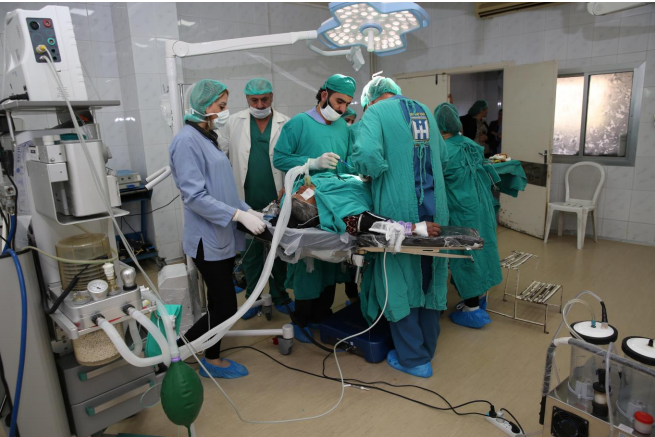
A hospital in the western Syrian city of Salamiyah is playing host to a unique kind of contemporary art exhibition. The three-man Danish art collective Superflex—Jakob Fenger, Rasmus Nielsen, and Bjørnsterne Christiansen—has sent a few pieces of top-notch surgical equipment to the city for the second iteration of a project ongoing since last year. The equipment will now be used to treat victims of the country’s bloody civil war.
In February, the hospital table, along with a surgical lamp and associated equipment, went on view as a single art piece at Galerie von Bartha in S-chanf, in the east of Switzerland. The artists consider the unnamed purchaser’s act of buying the table a form of art collecting, even though the buyers never take possession. The artists refer to the piece as a “readymade upside-down.”
“We want to challenge collecting itself,” Christiansen told artnet News in 2016. “Do you have to have the object, or can it be just as valuable to you that it be activated somewhere else?” The buyer gets a certificate of authenticity and a photograph of the installation.
Superflex’s Hospital Equipment (2016). Courtesy the artists and von Bartha.
Amid a seemingly endless civil war, Salamiyah has been subject to daily rocket fire until very recently, according to the artists. With that in mind, the collective worked with the Aga Khan Development Network to get the hospital equipment to the city, an effort that’s has been ongoing since February. “In these times of crisis, Salamiyah’s public hospital is under more and more pressure,” said Maher Aboumayaleh, manager of the health program in Syria for the Aga Khan Development Network, in a press release. Founded in 1967 by British business magnate His Highness the Aga Khan, the network supports healthcare, education, and infrastructure development in some 30 nations, with a focus on Asia and Africa.
The artists, all now in their forties, founded Superflex in 1994; they live in Copenhagen and studied at that city’s Royal Danish Academy of Fine Arts. The trio was recognized with this year’s Tate Turbine Hall commission, and have had solo shows at institutions from the Santiago Museum of Contemporary Art, Chile (2016) to the Hirshhorn Museum and Sculpture Garden, in Washington, DC, (2010) and REDCAT, Los Angeles (2004).